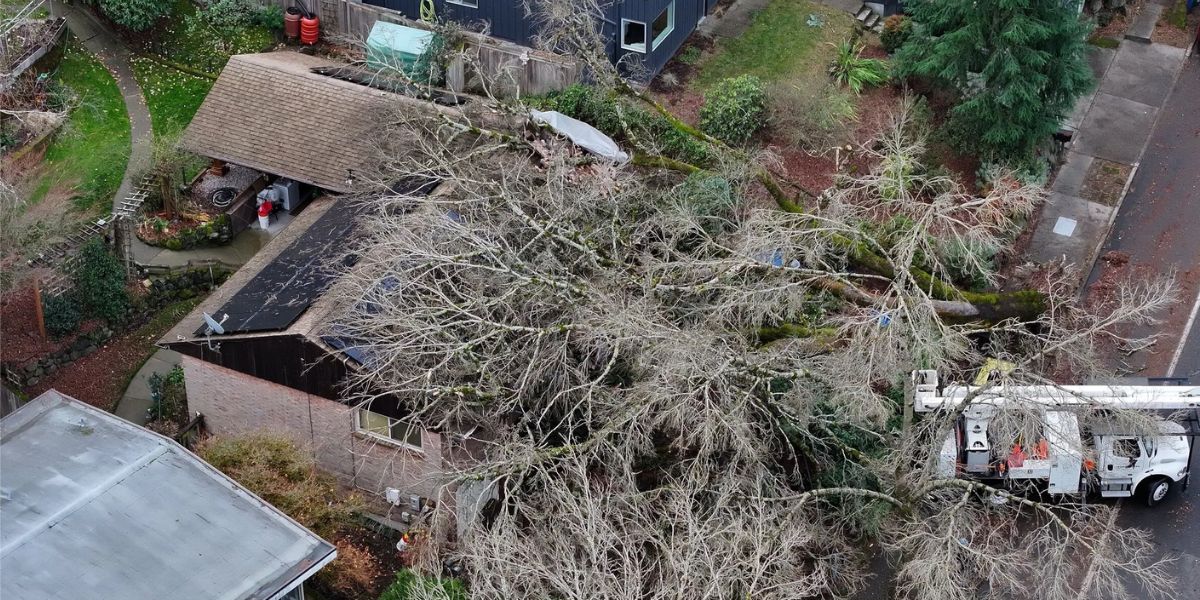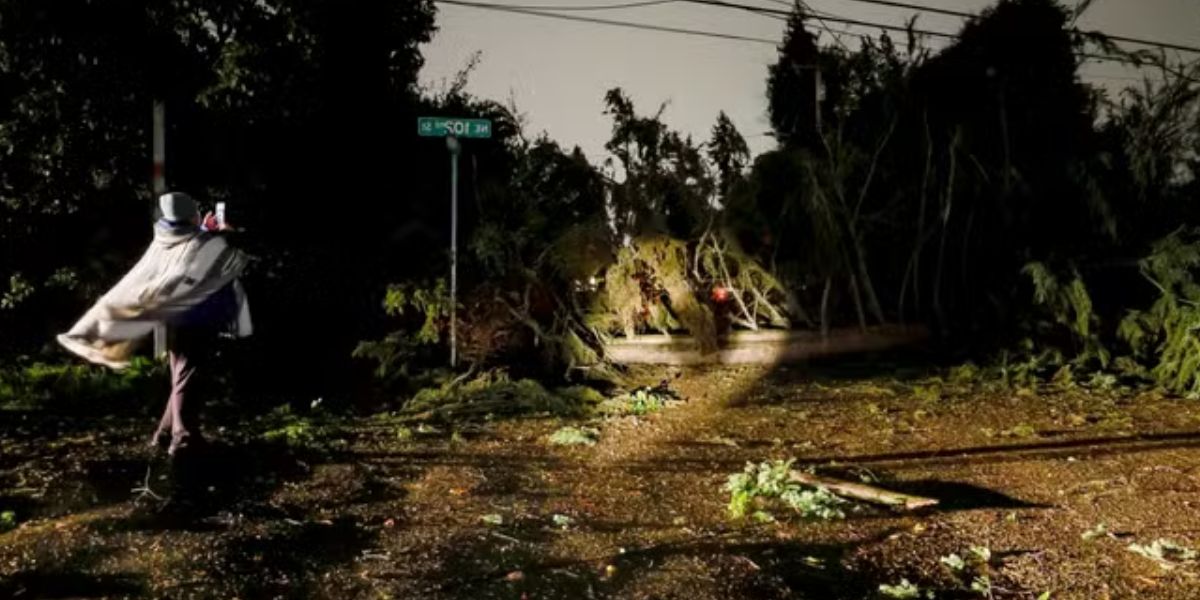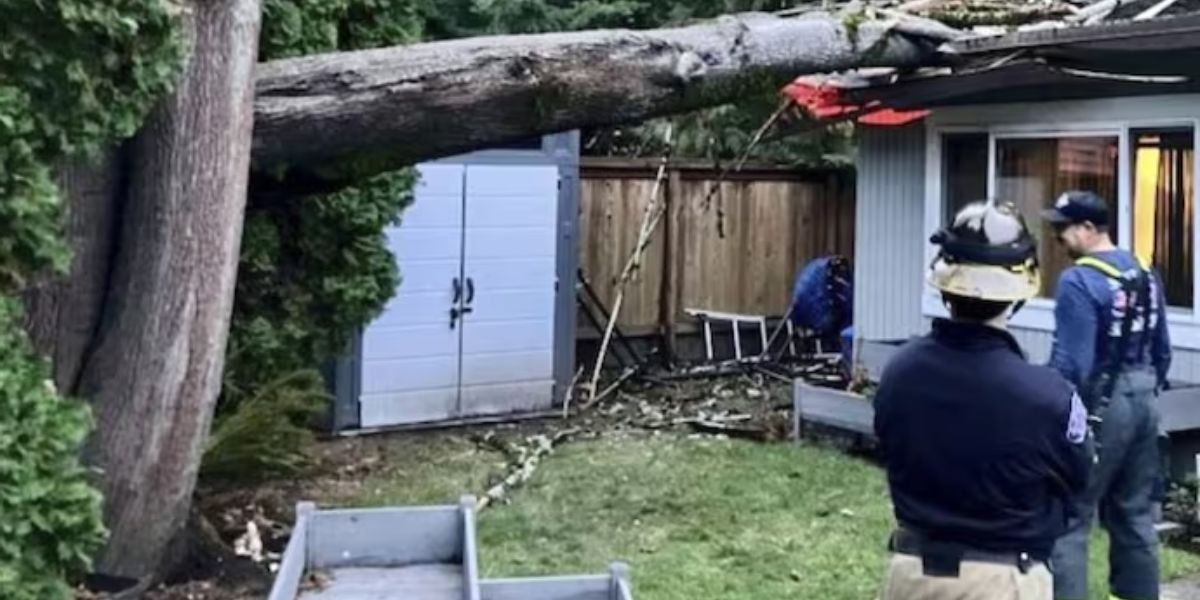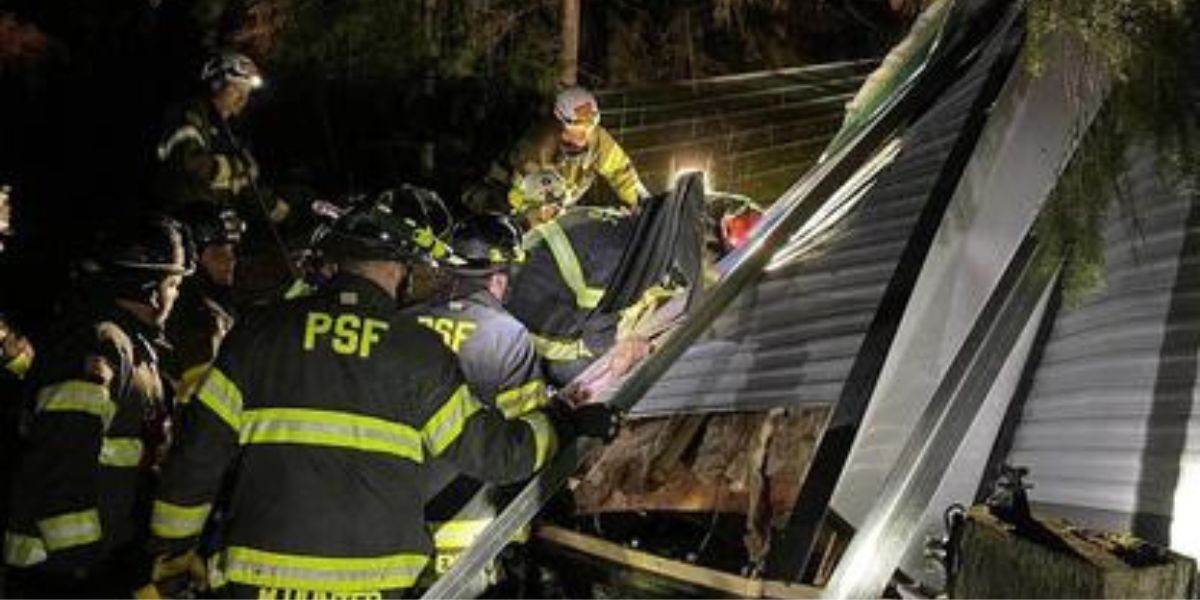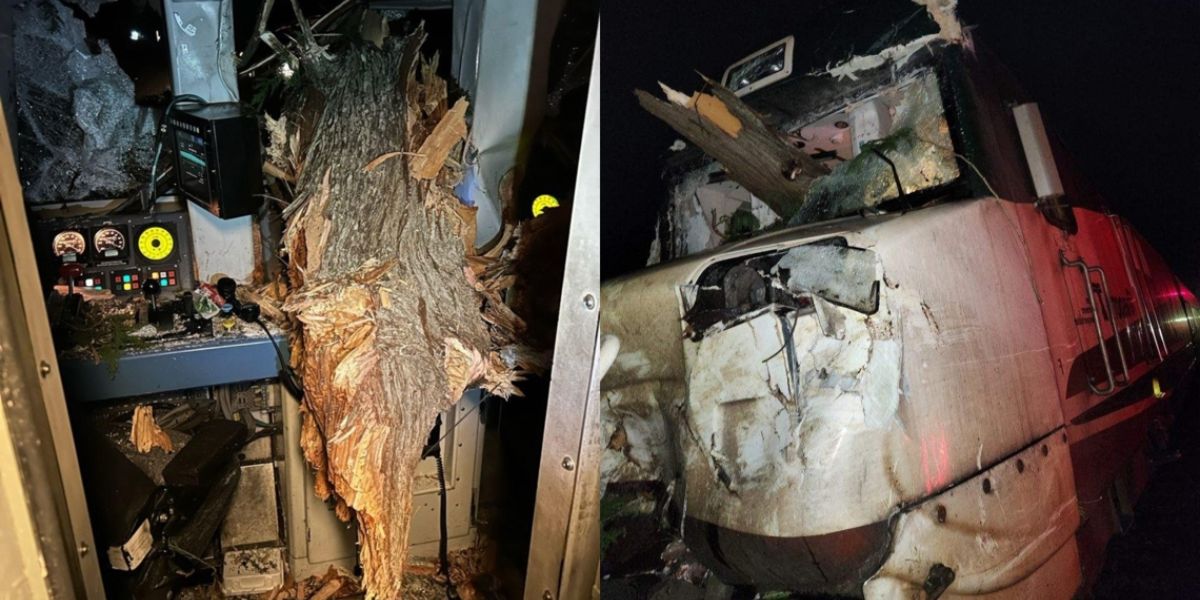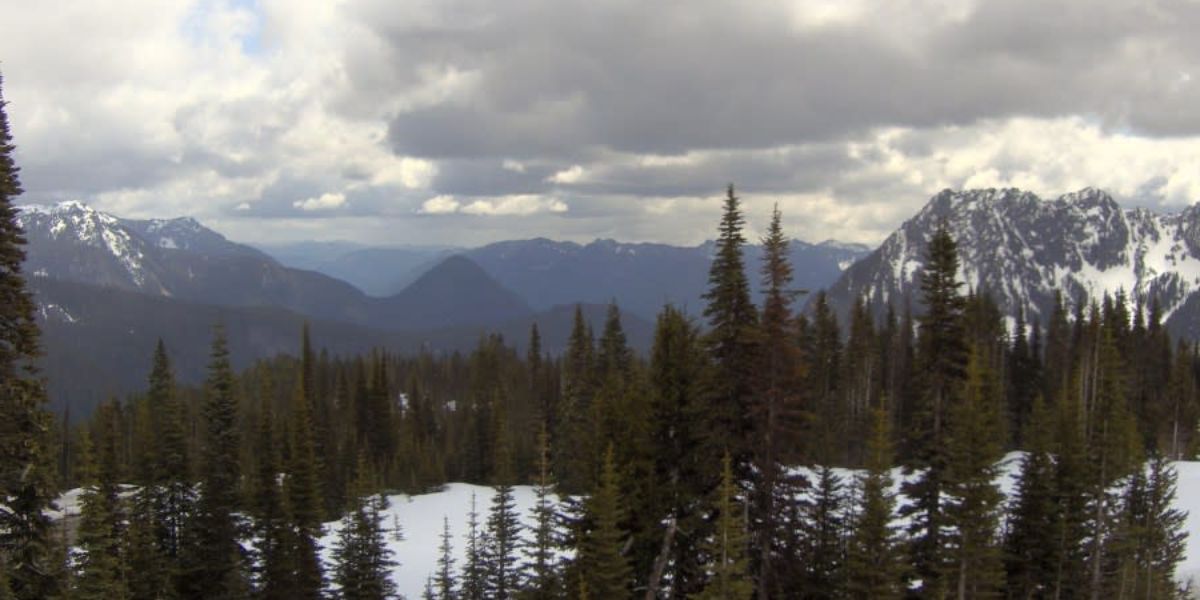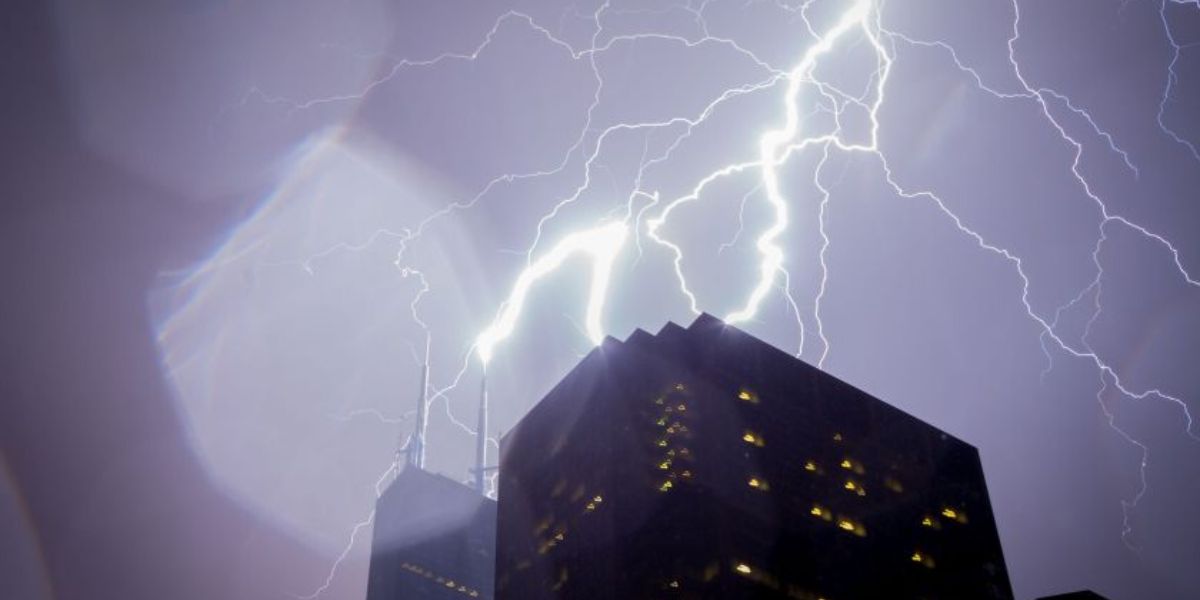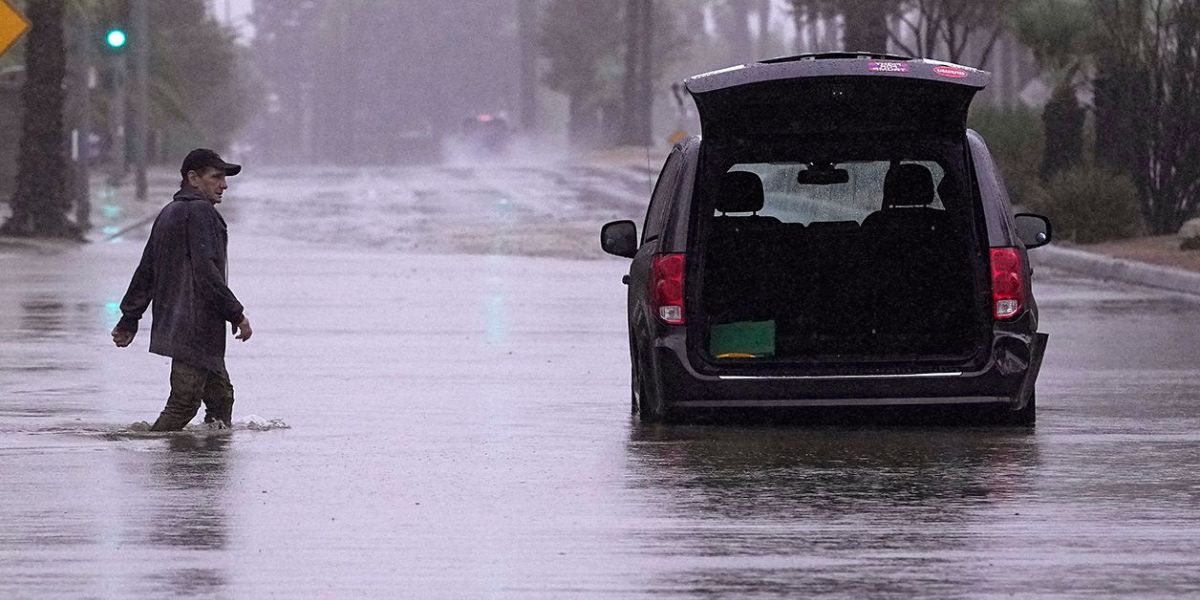A powerful storm, a ‘bomb cyclone,’ is hitting hard in the US northwest and western Canada, causing high winds, heavy rain, and heavy snowfall in the mountains. This could trigger flooding, mudslides, and rocks falling in some areas. As per the forecaster, the bomb cyclone happened because the air pressure quickly dropped off the coast, causing the weather system to rapidly become more intense.
Trees Uprooted & Widespread power outrages
The National Weather Service (NWS) in Seattle reported that the storm brought wind gusts of 55 mph at Sea-Tac Airport and up to 77 mph in Mount Rainier National Park. The strong winds uprooted trees, leading to widespread power outages.
Power outages
According to a USA TODAY power outage tracker, about 597,000 power outages were reported across Washington state, over 465,000 outages in King County, over 75,000 in Snohomish County and over 21,000 in Kitsap County, as of 7:31 a.m. ET.
Poweroutage.us reported that on Wednesday morning, more than 700,000 homes and businesses in Washington were without power. The number dropped later in the day to around 500,000. In California, around 15,000 customers were experiencing power outages.
Meanwhile, power crews were busy fixing downed powerlines across the region on Wednesday.
Crews are continuing to restore power from last night’s windstorm. If you see crews on the road, please give crews and first responders ample space to work, and avoid driving through active work areas. pic.twitter.com/WW7R4AXJ6x
— Seattle City Light (@SEACityLight) November 20, 2024
Bomb Cyclone kills 2
According to the South County Fire Department, a woman in her 50s was killed in Lynnwood, north of Seattle, when a large tree fell on a homeless camp just after 7 PM PT.
A woman, who was in the shower, was killed after a tree fell on a home in Bellevue, east of Seattle. The woman was declared dead at the scene and her husband was taken out of the home because the conditions were deemed too dangerous.
2 people injured
Two injured people were hospitalised when a tree fell on a trailer in Maple Valley, southeast of Seattle.
Train collides with fallen tree
An Amtrak train crashed into a fallen tree as per a KIRO7 report. Luckily, none of the 47 passengers were hurt, however, the train was inoperable.
Infrared satellite loop
The National Weather Service in Seattle shared a post on X, which revealed an almost 48-hour infrared satellite loop.
Here’s an almost 48 hour infrared satellite loop showing the evolution of the deep low pressure that affected much of the Pacific Northwest. Early in the loop, you can see a huge amount of cold air pouring southward from Alaska into the North Pacific. pic.twitter.com/Ay3RpPvDDk
— NWS Seattle (@NWSSeattle) November 20, 2024
Blizzard warning
Although the wind warnings are no longer in place, a blizzard warning is still in effect for the Cascade Mountains. Drivers are warned to carry chains as several big trucks lost control at Snoqualmie Pass in Washington.
Rain, snowfall and landslides expected
Later in the week as warmer air moves in, the heavy and wet snow that has fallen in the Cascades and North Rockies will begin to melt. Combination of snowmelt and heavy rain could lead to severe flooding in areas from Northern California to Oregon. By the end of the week, there will also be a high risk of landslides.
Stormy weather ahead
As per NWS report, thunderstorms might hit the coast on Wednesday, and another storm is expected on Friday, which could bring rough weather lasting through the weekend and into early next week.
Warning issued in northern California
The US Weather Prediction Center (WPC) issued a high-risk warning of heavy rainfall, cautioning about flash flooding and mudslides in northern California. Up to 8 inches (20 cm) of rain is expected in the San Francisco Bay area.
The storm has also extended into Canada, with strong winds being the major concern. According to BC Hydro, gusts up to 100 mph (160 km/h) have been recorded off Vancouver Island’s coast, leaving about 140,000 customers without power in British Columbia.
What is a bomb cyclone?
This term is used by meteorologists to describe a storm that intensifies quickly, with its central air pressure dropping by at least 24 millibars in 24 hours. They are called bomb cyclones because the rapid pressure drop generates explosive power in these storms, which in turn brings a variety of weather conditions, including blizzards, severe thunderstorms and heavy precipitation. These types of weather are not unusual for this time of year.
Bomb cyclone + Atmospheric river event
In recent weeks, there have been similar events throughout North America, which is called atmospheric river events, where small regions of moisture move outside tropical regions. When an atmospheric river happens along with a bomb cyclone, it can create a major weather event.

